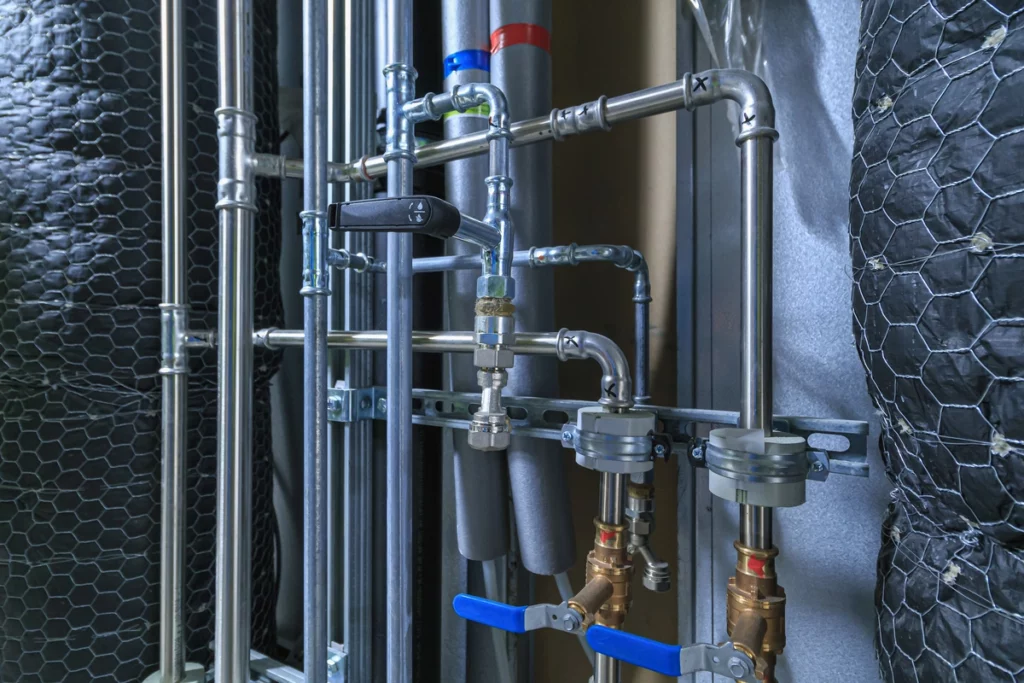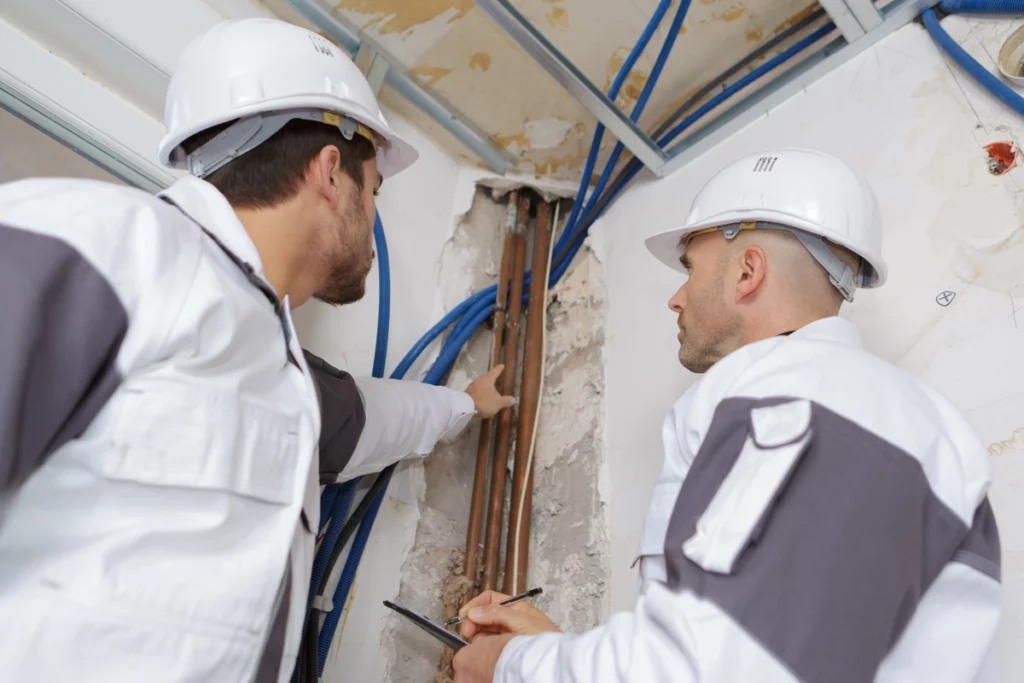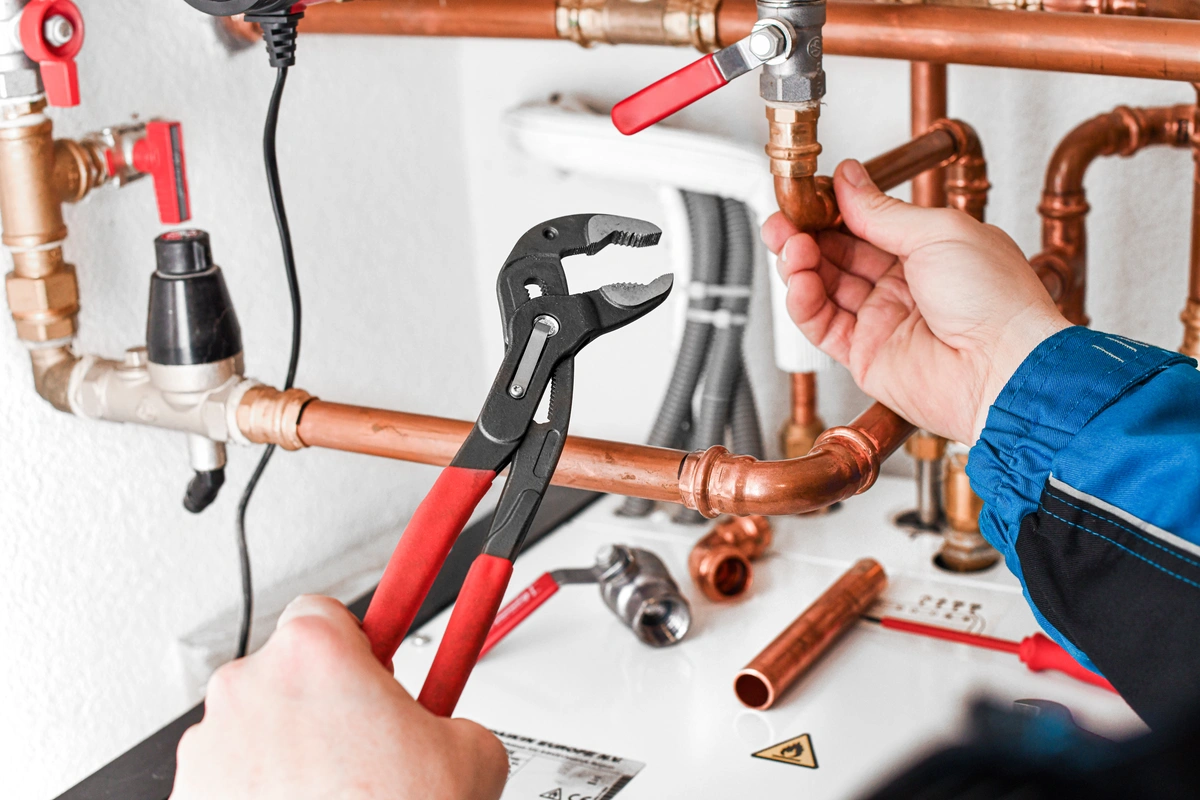Welcome to the fascinating world of bathroom plumbing! Have you ever wondered how that stream of water appears when you turn on the faucet or how all the waste magically disappears down the toilet drain? Well, get ready to discover the inner workings of your drainage system and uncover the secrets behind its functionality.
Understanding how your plumbing works can not only save you from potential disasters but also help you to make informed decisions. By reading this article and examining our bathroom plumbing diagram, you can unravel the mysteries of your restroom. With that said, read on to learn more!
Understanding the Basics of Plumbing Systems

Plumbing is essential, and understanding its basics is crucial for maintaining a functional bathroom.
- At its core, a plumbing system consists of two main components: the water supply system and the drainage system.
- The water supply system brings clean water into your home, while the drainage system carries away wastewater.
The water supply system starts at the main water line, usually located outside your home. It connects to various fixtures in your bathroom, such as sinks, toilets, showers, and bathtubs. This system relies on a network of pipes, valves, and faucets to distribute water throughout your residence. These pipes are typically made of materials like copper, and they’re sized according to the expected water flow and pressure.
On the other hand, the drainage system is responsible for removing wastewater from your bathroom fixtures. It consists of numerous pipes that connect to a larger pipe called the main sewer line. The main sewer line carries the wastewater away from your home and into the municipal sewer system or septic tank.
Understanding these basics will help you identify potential issues in your plumbing system and communicate effectively with a plumber when needed. Now, let’s dive deeper into the inner workings of your bathroom plumbing fixtures.
The Main Components of Bathroom Plumbing
Behind the walls of your bathroom lies a complex group of pipes and components that make up your plumbing system. Let’s take a closer look at the main components you’re likely to encounter:
Water supply lines: Water lines deliver water from the main water line to your bathroom fixtures and are connected to various valves and faucets.
Drain line and waste pipes: Drain lines carry water disposal from your bathroom fixtures and into the main sewer line. They’re designed with proper slopes to facilitate smooth drainage.
Traps: Traps are curved sections of pipe located beneath your sinks, showers, and bathtubs. They’re made to hold a small amount of water, creating a seal that prevents sewer gases from entering your home.
Vents: Vent pipes play a vital role by equalizing pressure, removing excess moisture, and getting rid of odor in your bathroom. They are typically connected to the duct that extends to the roof of your home.
Common Bathroom Plumbing Fixtures
While you may not know much about the plumbing that’s located behind the scenes, you’re probably very familiar with the main components of your bathroom. Here are a few of the primary fixtures:
Toilet 🚽
The toilet is perhaps the most essential fixture in any bathroom. It consists of several components, including the toilet flange, bowl, flush valve, fill valve, and flapper. Understanding how these components work together is crucial for troubleshooting common toilet problems like leaks, weak flushes, or running water.
Bathroom Sink 🧼
The sink is another important fixture in your bathroom. It consists of a basin, faucet, drain, and trap. The faucet controls the flow of both hot and cold water, while the drain and trap prevent odors and sewer gases from entering your bathroom.
Shower 🚿
The shower allows you to enjoy a refreshing bath. It consists of a shower head, mixing valve, diverter valve, and drain. The mixing valve controls the temperature of the water, while the diverter valve directs the water flow between the shower head and tub spout.
Bathtub 🛁
The bathtub provides a relaxing space for soaking and bathing. It shares similarities with the shower, including a mixing valve, diverter valve, and drain. However, the bathtub typically has a larger capacity and may include additional features like whirlpool jets.
The Complex World of Plumbing

When it comes to plumbing, most people have no idea how it works. However, examining bathroom plumbing diagrams is a great way to become familiar with it. Just remember, plumbing jobs should be left to professionals.
At Black Tie Plumbing, we can take care of things for you. Our team can fix anything from a leaky faucet to drain stoppage.
So, if you’d like to learn more about our services, call 1-888-973-3981, or reach out to us on our website. We’ll be in touch soon!





